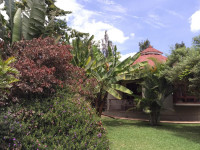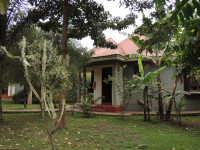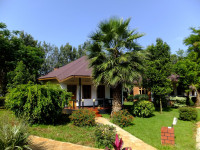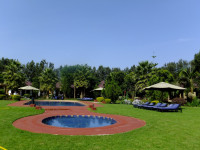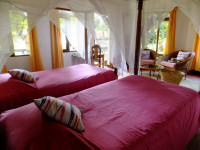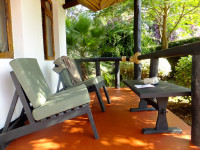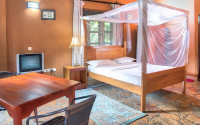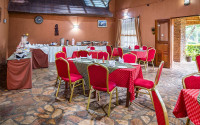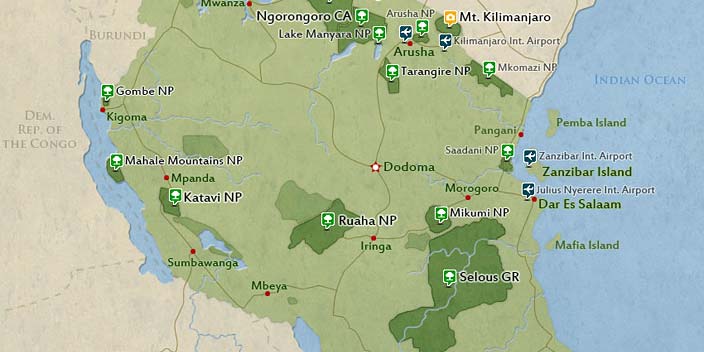
$1,651 to $1,684 pp (USD)
2 travelers on Start dateArrival
Arrival

Day 1
Kilimanjaro aiport to Arusha
Kilimanjaro aiport to Arusha
Upon your arrival, one of our staff members will pick you up from Kilimanjaro International Airport and transfer you to your booked hotel. Here, you will receive a short briefing about the upcoming tour. We trust that you will enjoy your stay, and we sincerely hope that your safari with Kale Voyage will exceed your expectations.
- Main Destination:
- Arusha (City)
- Accommodation:
- Arusha Planet Lodge
- Meals & Drinks:

Day 2
Arusha to Tarangire national park
Arusha to Tarangire national park
In the morning, after enjoying your breakfast at around 6:00 am, your driver guide will arrive at the hotel to commence your adventure. Widely recognized as the Elephant Playground, Tarangire boasts a plethora of attractions, including its magnificent variety of wildlife and expansive landscapes. This area is home to a substantial population of elephants, and you can also encounter other fascinating animals such as lions, buffaloes, gazelles, zebras, and gnus.
Anticipate sightings of various mammals, with the added delight of giraffes gracefully feeding from the exquisite acacia branches, and zebras and gazelles coexisting harmoniously. Occasionally, with a stroke of luck, we may come across a pride of lions lounging under the shade of trees. If fortune favors you, there might be opportunities to spot cheetahs, onyx, and kudu from the vantage points along the road.
- Main Destination:
- Tarangire National Park
- Accommodation:
- Bougainvillea Safari Lodge
- Meals & Drinks:

Day 3
Tarangire to serengeti national park
Tarangire to serengeti national park
Following an early morning breakfast, you and your driver guide will set off for your next destination: Tanzania's oldest and most renowned Serengeti National Park. The journey takes approximately 3 hours and 30 minutes before your exhilarating game drive begins. Unlike any other place on the planet, the Serengeti boasts a unique ecosystem characterized by breathtaking scenery, vibrant shifting light, and a myriad of species that have chosen this area as their home.
With thousands of predators and hundreds of thousands of prey, it's no wonder that the animal communities here are always engaged in fascinating activities. During today's safari game drive with your guide, the likelihood of encountering a variety of wildlife is high, including lions, leopards, elephants, zebras, cheetahs, and antelopes, among numerous other species.
- Main Destination:
- Serengeti National Park
- Accommodation:
- Kontiki Hotel
- Meals & Drinks:

Day 4
Serengeti to Ngorongoro crater
Serengeti to Ngorongoro crater
After enjoying breakfast at dawn, you will proceed to the Ngorongoro Crater, which stands as the world's largest dormant volcanic crater and serves as the heart of the Ngorongoro Conservation Area. In this haven for elephants, you wouldn't want to miss any of the captivating sights. As the big male tuskers approach the end of their lives, they migrate to feed on the soft, swampy grasses beside the surrounding wetlands, often referred to as the "elephant graveyard."
The Ngorongoro Crater is renowned for its vast array of wildlife. Statistics reveal an impressive population, including around 9,000 zebras, 15,000 wildebeests, 120 lions with well-defined territories, 400 hyenas, and approximately 50 black rhinos. Numerous wildebeests and other herd animals make this crater their year-round residence, capitalizing on the multiple water sources available throughout the year, fed by migratory animals during the mating season.
- Main Destination:
- Ngorongoro Crater
- Accommodation:
- Bougainvillea Safari Lodge
- Meals & Drinks:

Day 5
Ngorongoro to lake manyara national park
Ngorongoro to lake manyara national park
Breakfast will be served before embarking on our journey to Lake Manyara National Park, another gem on the Northern Circuit. Manyara is renowned for its breathtaking lake, nestled along the Rift Valley Escarpment, and is teeming with diverse flora and fauna. Take in the beauty and tranquility as pink flamingos gracefully flutter over the shallow, alkaline waters, foraging for algae. The park boasts a rich avian population, with over 400 different bird species, ranging from bee-eaters to hornbills.
If you visit between February and June, be sure to keep an eye out for yellow-billed storks and pink-backed pelicans. Manyara's geography may be confined, but it hosts a variety of ecosystems, including different woodlands nourished by rivers flowing from the surrounding escarpment. Monkeys are plentiful, and be on the lookout for lions, giraffes, warthogs, and occasionally irritable Cape buffalo—proud residents of this park.
- Main Destination:
- Lake Manyara National Park
- Accommodation:
- No accommodation (End of tour)
- Meals & Drinks:



